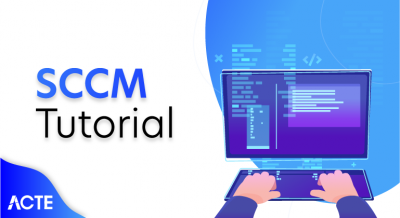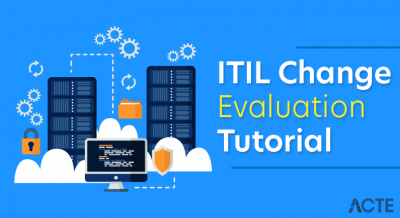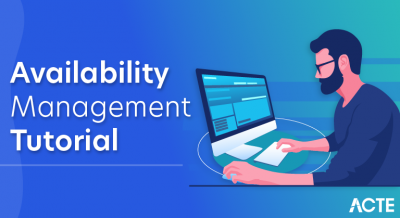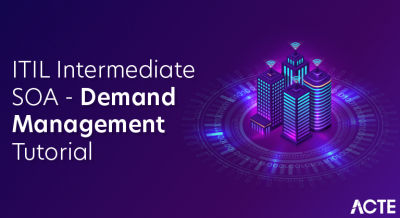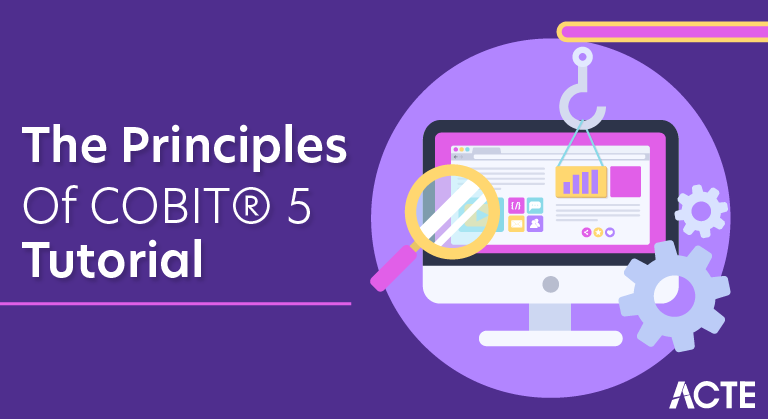
COBIT?
- COBIT is ISACA’s IT management system to help organizations create, coordinate and execute knowledge management and management strategies.
- First released in 1996 and developed to help financial audit societies better manage the growth of IT environments, COBIT (Control Objectives for Information and Related Technologies) was first developed as a collection of IT management goals. In 1998, the version 2 of ISACA was released, which extended the audit system. In the 2000s, version 3 of ISACA was developed and today IT management and information management techniques were implemented.
- COBIT 4 was released in 2005 then COBIT 4.1 released in 2007. Those updates included more information about information and communication technology governance. COBIT 5 was released in 2012, and an add-on to COBIT 5 was released by the ISACA in 2013, which included more information for companies on risk management and information governance.
- In 2018 the ISACA announced an updated version of COBIT, repealing the version number and naming it COBIT 2019. According to the ISACA this revised version of COBIT is planned to grow continuously with “more frequent and dynamic changes.” COBIT 2019 was introduced to build more flexible, collaborative governance strategies that address new and evolving technologies.
- COBIT has walked through a number of iterations and releases since its initial introduction in 1996. The current volume, COBIT 5, is therefore an important resource for everyone who manages information systems and IT teams.
- Read our bestselling Guide to Enterprise IT Governance based on COBIT 5 for a practical introduction to the core concepts of COBIT 5.

Why Use Cobit 5?
- Managers across the globe face new challenges every day in their organizations. New user demands, risk scenarios, and industry-specific regulations emerge every single day to challenge the stability of an organization.
- With the development of technology, enhancing the value of an intellectual property, managing risk, and security, and assuring compliance via effective IT management and governance has attained a whole new level. It has become very important as well as challenging to take care of all these factors. Here, you will find Cobit as the best guide to reach perfection.
- There is no other framework based on the enterprise IT available in the market that offers the same benefits as Cobit. It helps all sizes of enterprises to maintain their stability and focus on their growth. The below-mentioned ones are some points that might help you in getting precise answers about why you must use Cobit for your organizations.
- It maintains high-quality information for supporting business decisions.
- It helps in achieving strategic goals via the innovative and effective use of IT.
- It helps in achieving operational excellence via reliable, efficient application of technology.
- It maintains IT-related risk at an acceptable level.
- It helps in optimizing the cost of IT services.
- It supports compliance with contractual policies and agreements, relevant regulations and laws.
- These are some points that might help you in choosing this technology. As we have already mentioned above, COBIT 5 is the latest version offered by ISACA, hence, it will be the most preferred technology if we talk about IT governance and management.
Who Uses Cobit 5?
- Cobit 5, the latest version offered by ISACA, is compatible with every kind and size of the organization. COBIT 5 is useful and generic for every size of enterprise, whether commercial, public, or in the non-profit sector. COBIT 5 is basically used by the ones who have primary responsibility for business processes and technology. Moreover, it is used globally by persons who depend on technology for reliable and relevant information.
- The individuals who are focused on providing quality, reliability, and control of information as well as related technology also use COBIT 5 to enhance their performance. Most of the Cobit 5 users include consultants and enterprise executives in the following sectors:
- Audit and Assurance
- Compliance
- IT Operations
- Governance
- Risk and Security Management
COBIT Components
- COBIT 2019 Framework: Introduction and methodology: The main guide that introduces the basic COBIT principles alongside the structure of the overall framework.
- COBIT 2019 Framework: Governance and management objectives: A companion guide that dives into the COBIT Core Model and 40 governance and management objectives. Each objective is described including its purpose, how it connects with the enterprise and how it aligns goals.
- COBIT 2019 Design Guide: A companion guide that offers in-depth guidance for developing a uniquely tailored governance system for your organization.
- COBIT 2019 Implementation Guide: The fourth companion guide in the framework, which guides businesses through implementing the governance strategy once it’s developed. This includes best practices, ways to avoid pitfalls and how to integrate your COBIT 2019 strategy with your COBIT 5 strategy.
COBIT 5 summarised
COBIT 5 is based on five principles that are essential for the effective management and governance of enterprise IT:
- Principle 1: Meeting stakeholder needs
- Principle 2: Covering the enterprise end to end
- Principle 3: Applying a single integrated framework
- Principle 4: Enabling a holistic approach
- Principle 5: Separating governance from management.

COBIT 5: The 5 key principles
1. Meeting stakeholder needs
- The first principle of COBIT 5, Meeting Stakeholder Needs, encompasses the idea that enterprises exist to create value for stakeholders – whatever that value may be. When making decisions regarding IT management and governance, organizations therefore need to consider which stakeholders stand to benefit from this decision, as well as who is taking on the majority of the risk.

2. Covering the enterprise end-to-end
- Because COBIT 5 looks at governance and IT management decisions from an End-to-End enterprise perspective, organizations employing this framework make decisions that extend past the IT function, and instead treat IT as an asset that aligns with other processes.

3. Applying a Single, Integrated Framework
- COBIT 5’s single integrated framework allows it to be used as an overarching governance tool and management system that is relevant to other frameworks within the organization.
4. Enabling a Holistic Approach
- Holism – the concept of systems being viewed as a whole, as opposed to individual components – is a critical modern business strategy. COBIT 5 takes a holistic approach to IT management and governance, allowing for greater collaboration and achievement of common goals.

5. Separating Governance From Management
- Finally, COBIT 5 emphasizes the need to make a clear distinction between IT governance and management. This is important as ISACA believes the two components require separate organizational structures and different processes, as they each serve separate organizational purposes.

These five principles enable an organization to build a holistic framework for the governance and management of IT that is built on seven ‘enablers’:
- People, policies and frameworks
- Processes
- Organizational structures
- Culture, ethics and behavior
- Information
- Services, infrastructure and applications
- People, skills and competencies
Together, the principles and enablers allow an organization to align its IT investments with its objectives to realize the value of those investments.
Benefits of COBIT
The COBIT 5 framework can help organisations of all sizes:
- Improve and maintain high-quality information to support business decisions;
- Use IT effectively to achieve business goals;
- Use technology to promote operational excellence;
- Ensure IT risk is managed effectively;
- Ensure organisations realise the value of their investments in IT; and
- Achieve compliance with laws, regulations and contractual agreements.
- The COBIT 2019 framework helps businesses align existing frameworks in the organization and understand how each framework will fit into the overall strategy. It can also help businesses monitor the performance of these other frameworks, especially in terms of security compliance, information security and risk management.
- It’s also designed to give senior management more insight into how technology can align with organizational goals. You can directly map pain points in the business to certain aspects of the framework, emphasizing the need for “control-driven IT,” according to the ISACA. The framework gives CIOs and other IT executives a way to demonstrate the ROI on an IT project and how it will help reach key business objectives.
Cobit Framework
- As we have already mentioned above, COBIT allows you to control all the IT operations of your company so that you can minimize the risk and enhance the work power in a disciplined manner. Cobit allows all the managers to fill the gap between technical issues, control requirements, and business risks.
- Moreover, it enables clear policy development, as well as fine practice for IT, control throughout your organization. In the recent update of Cobit, ISACA introduces some new concepts and terminologies that include 40 management and governance objectives in order to establish a governance program. However, the framework still plays fine with additional IT management frameworks such as TOGAF, CMMI, and ITIL.
The main difference between Cobit and other frameworks is that it offers keen attention to risk management, security, and information governance. The overall Cobit framework is designed to provide businesses an enhanced and flexible experience of customizing an IT governance strategy. The main focus of Cobit remains stable on the following domains mentioned in the below-given points:
- Planning and Organizing
- Delivery and Support
- Acquiring and Implementation
- Monitoring and Evaluating
Apart from this, if we talk about the key points of Cobit framework’s working, it is entirely aimed at the following points given below:
- Strategic Alignment
- Value Delivery
- Performance Management
- Risk Management
- Resource Management
COBIT Goals
According to the ISACA, COBIT 2019 was updated to include:
- Focus areas and design factors that give more clarity on creating a governance system for business needs
- Better alignment with global standards, frameworks and best practices to bolster the framework’s relevance
- An open-source model that allows for feedback from the global governance community to encourage faster updates and enhancements
- Regular updates released on a rolling basis
- More guidance and tools to support businesses when developing a “best-fit governance system, making COBIT 2019 more prescriptive”
- A better tool to measure performance of IT and alignment with the CMMI
- More support for decision making including new online collaborative features
- COBIT 2019 also introduces “focus area” concepts that describe specific governance topics and issues, which can be addressed by management or governance objectives. Some examples of these focus areas include small and medium enterprises, cybersecurity, digital transformation and cloud computing. Focus areas will be added and changed as needed based on trends, research and feedback – there’s no limit for the number of focus areas that can be included in COBIT 2019.
COBIT 2019 components
- COBIT 2019 Framework: Introduction and methodology: The main guide that introduces the basic COBIT principles alongside the structure of the overall framework.
- COBIT 2019 Framework: Governance and management objectives: A companion guide that dives into the COBIT Core Model and 40 governance and management objectives. Each objective is described including its purpose, how it connects with the enterprise and how it aligns goals.
- COBIT 2019 Design Guide: A companion guide that offers in-depth guidance for developing a uniquely tailored governance system for your organization.
- COBIT 2019 Implementation Guide: The fourth companion guide in the framework, which guides businesses through implementing the governance strategy once it’s developed. This includes best practices, ways to avoid pitfalls and how to integrate your COBIT 2019 strategy with your COBIT 5 strategy.
Conclusion
- Now, we have elaborated all the key points and essential information related to the COBIT framework in this article. COBIT is doubtlessly a great tool to organize your enterprise IT working and remove risk factors. This will allow you to feel free and be completely focused on organizational growth and enhanced production. Hence, if you own an IT firm, business or an organization, COBIT can prove to be a great tool for your overall growth.
- Apart from this, if you are serving for an organization in the management or governance section, you can take great advantage of this framework to grow further in your career. You can easily get all the required details related to the COBIT Framework via this article and can decide whether to choose it as your companion or not. Choose wisely and do well.

